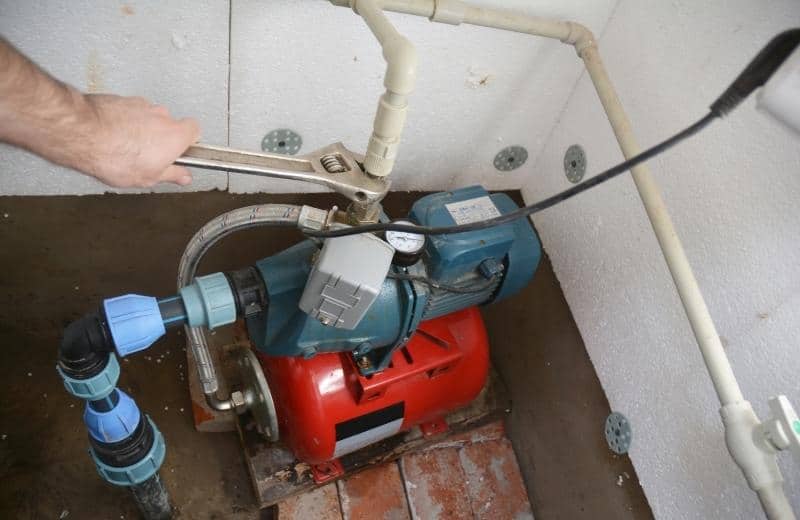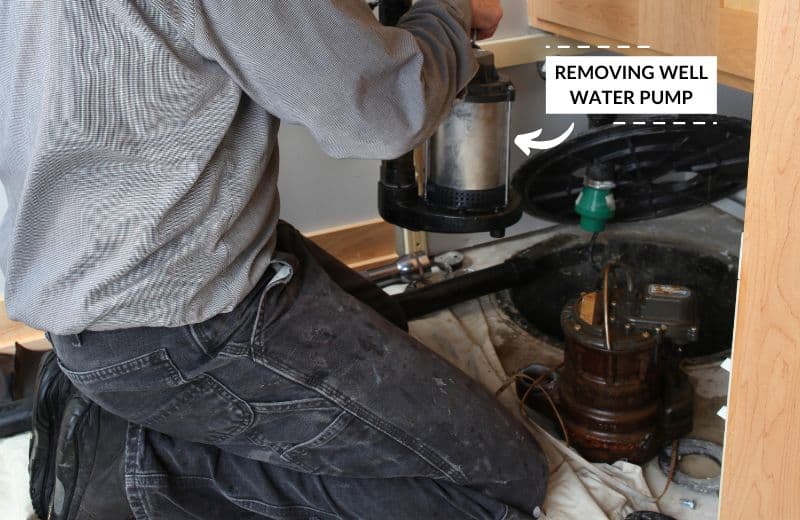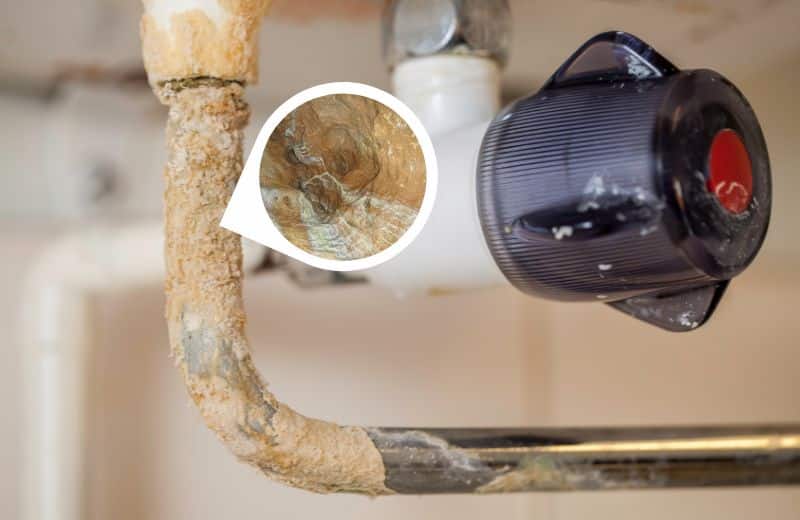Water pressure, measured in pounds per square inch (PSI), is the pressure placed on your pipes and plumbing. The EPA recommends setting your well pressure tank to 60 PSI, but if you can’t maintain this in your well system, there may be a problem.
You can measure your home’s water pressure with a pressure gauge. The most common causes of low well water pressure are issues with the well pump pressure switch, the wrong pump type or size, problems with the pressure tank’s air bladder, and a clogged sediment filter.
In this guide, our water treatment experts have shared why your well water pressure might be low, and the best methods of fixing low water pressure in a well.
| Causes | Solutions |
|---|---|
| Your Well Pump is Undersized for Your Demand | Manage your water usage and upgrade your pump and/or pressure tank if your water demand has increased. |
| The Well Water Table Has Dropped | Check the depth-to-water measurements of your local wells. |
| Your Well Pump’s Pressure Switch is Faulty | Check your pressure switch settings and replace the switch if necessary. |
| There’s Clogging in the Well Screen or Casing | Prevent clogging of the well screen by regularly servicing and maintaining your well. |
| Your Well Pump is Old or Faulty | Make sure your well pump is properly maintained and professionally inspected regularly. |
| There are Leaks in the Well System | Hire a professional plumber to inspect your entire plumbing system and arrange for prompt repairs if necessary. |
| The Well Pressure Tank is Waterlogged | Get a professional to fix pressure tank issues. |
| You’ve Installed a Less Efficient Pump Type | Upgrade to constant pressure pump. |
| There Are Mineral Deposits in your Plumbing | The best way to manage this issue is to install a water softener. |
| Your Well’s Sediment Filter is Clogged | Clean and replace filter media as recommended by the manufacturer. |

Table of Contents
- 🚱 Your Well Pump is Undersized for Your Demand
- 📥 The Well Water Table Has Dropped
- ⚠️ Your Well Pump’s Pressure Switch is Faulty
- ⛔️ There’s Clogging in the Well Screen or Casing
- 🔩 Your Well Pump is Old or Faulty
- ⛲️ There are Leaks in the Well System
- 📈 The Well Pressure Tank is Waterlogged
- 👎 You’ve Installed a Less Efficient Pump Type
- 🪨 There Are Mineral Deposits in your Plumbing
- ❗️ Your Well’s Sediment Filter is Clogged
- 📑 Final Word: When to Consult an Expert
🚱 Your Well Pump is Undersized for Your Demand
If your water demand exceeds your well pump’s maximum output, it can cause low pressure in your plumbing. Manage your water usage and upgrade your pump if your water demand has increased. Upgrading your well pressure tank may also be necessary, allowing for stable pressure in your pipes and more available volume. Check out our updated pressure tank size guide for more information.

📥 The Well Water Table Has Dropped
A drop in the water table, which can occur due to droughts or periods of excessive water use, can affect your well’s water level and lead to reduced water availability. This can cause low water pressure because there isn’t enough water to meet your demand. The NWIS Mapper is a good tool for finding depth-to-water measurements for local wells, although the data may not be current.
⚠️ Your Well Pump’s Pressure Switch is Faulty
Most well pumps have a pressure switch, which controls when the pump turns on and off. A faulty pressure switch may switch on and off excessively, preventing the pressure tank from filling and resulting in low or inconsistent water pressure.
Check your pressure switch settings and read our guide to adjusting the switch for more information. Replace the switch if necessary.
⛔️ There’s Clogging in the Well Screen or Casing
A buildup of sediment, minerals, or other debris in the well screen or casing can restrict the flow of water in the well, causing low water pressure in your plumbing. You can manage and prevent clogging of the well screen by regularly servicing and maintaining your well.
🔩 Your Well Pump is Old or Faulty
If your pump is aging or malfunctioning, you may experience a low pump flow, leading to low water pressure in your pipes. Make sure your well pump is properly maintained and professionally inspected regularly – the CDC recommends getting your well checked annually for mechanical problems.

⛲️ There are Leaks in the Well System
Leaks in the pipes anywhere along your well and plumbing system can result in water loss and reduced pressure. The EPA’s guidance on detecting leaks is to check your water meter before and after two hours of no water use. If the meter reading changes, there’s probably a leak. Hire a professional plumber to inspect your entire plumbing system and arrange for prompt repairs if necessary.
📈 The Well Pressure Tank is Waterlogged
A waterlogged pressure tank (with an excess of water rather than the proper balance of air and water) can cause the pressure switch to struggle to regulate the pump’s on-off cycles effectively, leading to inconsistent water delivery and low pressure. You may need to adjust the air pressure in the tank by recharging the bladder. The National Ground Water Association says hiring a professional to fix pressure tank issues is usually cheaper and less hassle than doing it yourself.
👎 You’ve Installed a Less Efficient Pump Type
Well pumps are either conventional or constant pressure (variable speed) pumps. A conventional pump isn’t the best solution if you want consistently high water pressure in your well. A constant pressure pump speeds up or slows down depending on your level of water usage, so it runs faster when you need more water, ensuring demand is met.
🪨 There Are Mineral Deposits in your Plumbing
The USGS estimates that around 85% of homes in the US have hard water, and calcium and magnesium are common in well water because of leaching from mineral-rich rocks and soils.
The buildup of mineral deposits and limescale clogs pipes and slows down water flow, causing low pressure. The best way to manage this issue is to install a water softener.

❗️ Your Well’s Sediment Filter is Clogged
Most wells are equipped with a sediment filter to prevent sand and debris from entering your plumbing. When this filter becomes clogged, the volume of water flowing through will be reduced, resulting in low water pressure. Clean and replace filter media as recommended by the manufacturer. Note: if you don’t have a sediment filter, install one to prevent sediment from causing clogged pipes in your home.
📑 Final Word: When to Consult an Expert
In most scenarios, low water pressure in your well will need to be professionally addressed. Unless you’re an experienced plumber, we recommend hiring a pro. You can find licensed well contractors in your area by consulting the National Ground Water Association (NGWA).
Your plumber might recommend installing a constant pressure system at the water line connecting the well to your plumbing. This will continuously adjust the speed of the well pump to match the water demand, keeping your water pressure constant. You may also need to consider installing a water treatment system to address contaminants in your water supply that are affecting your water pressure.

